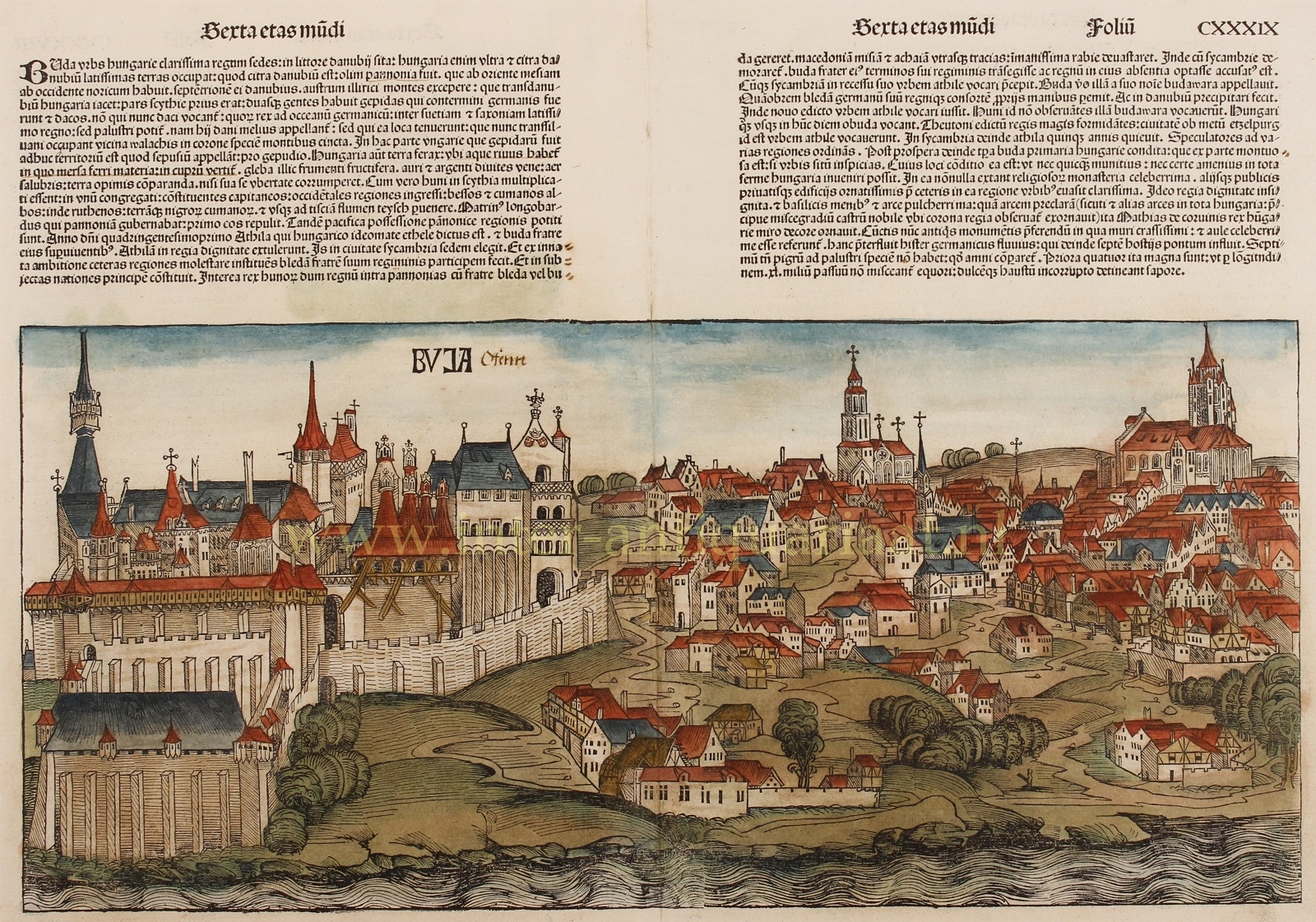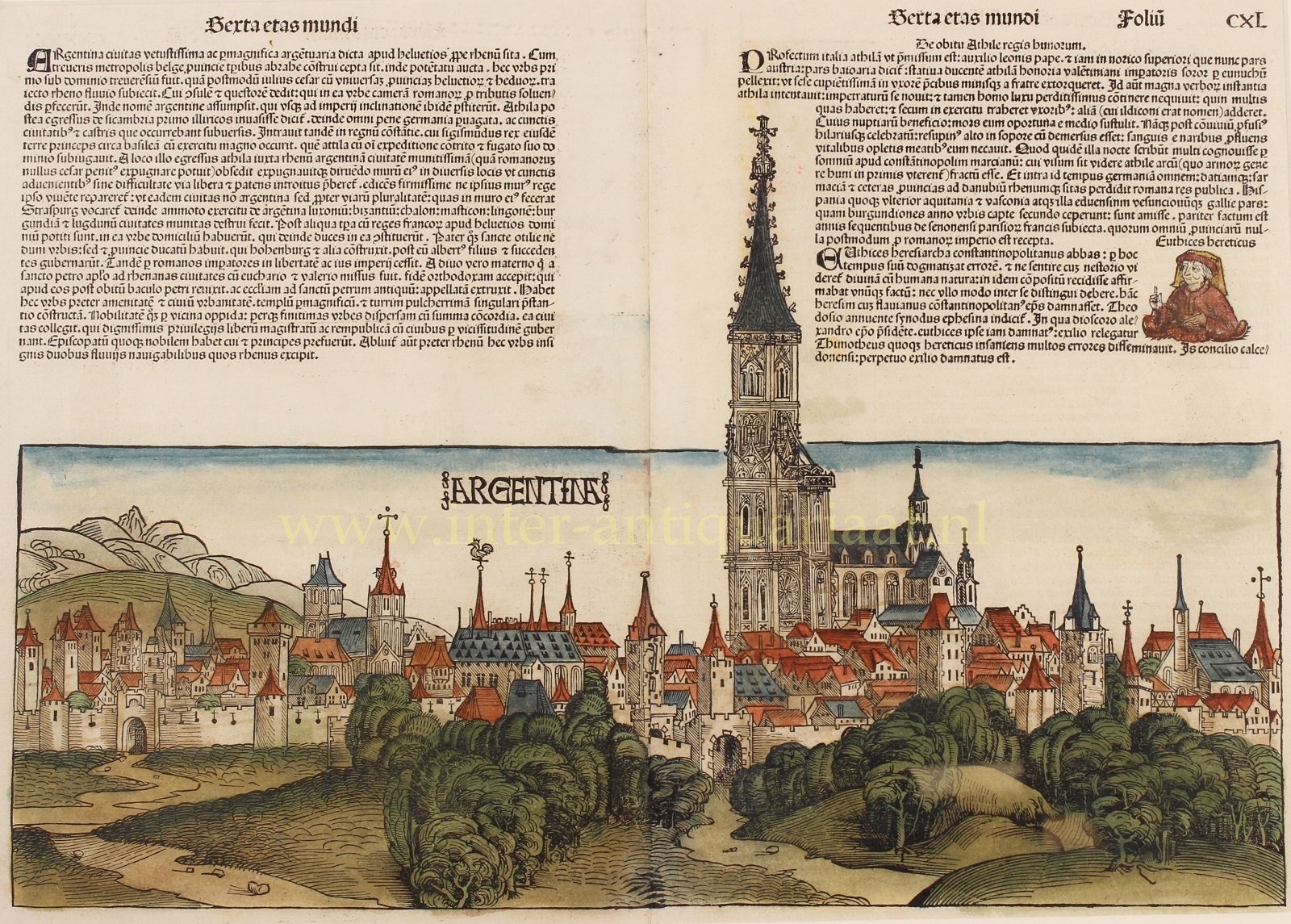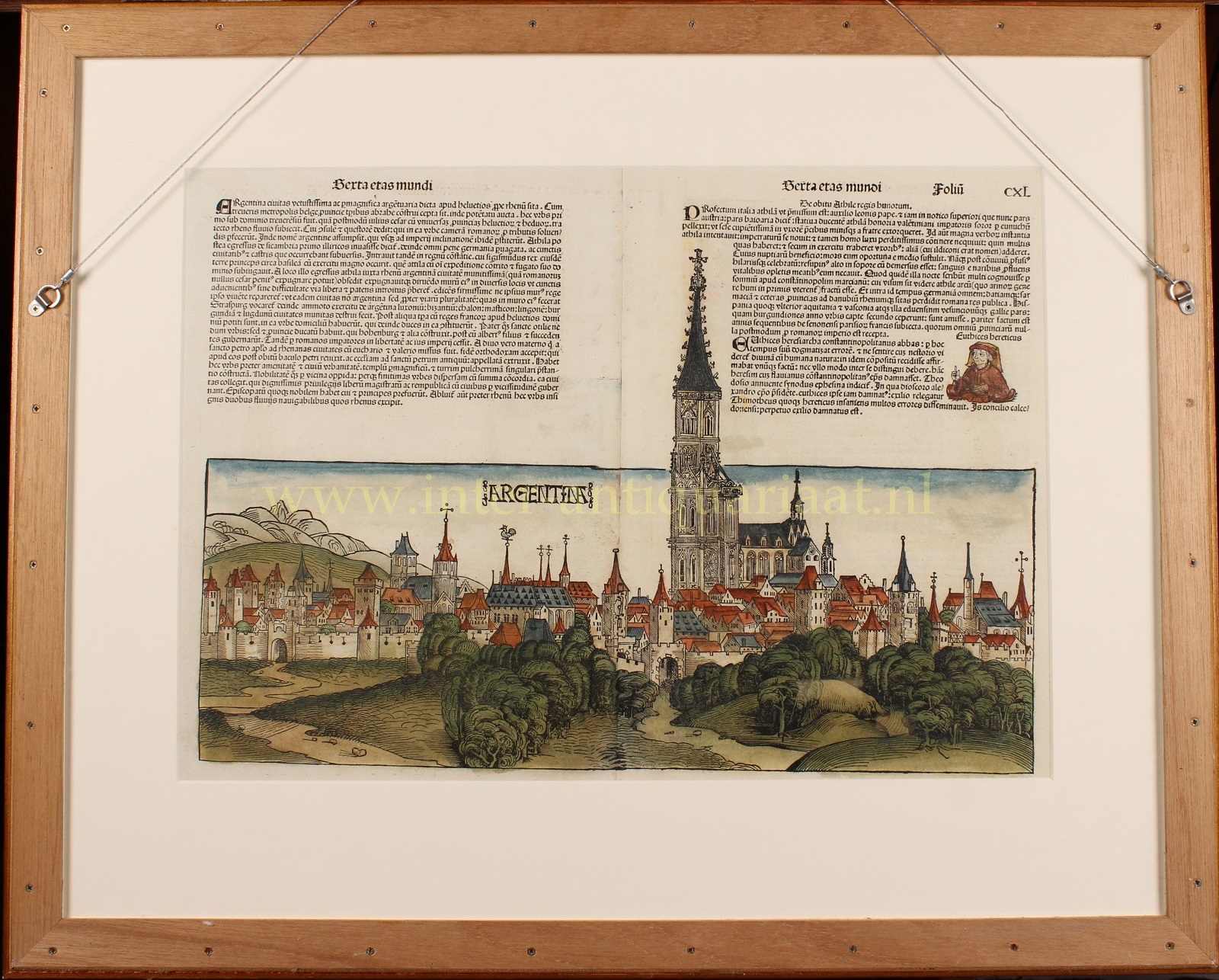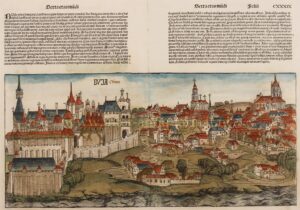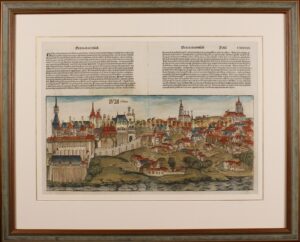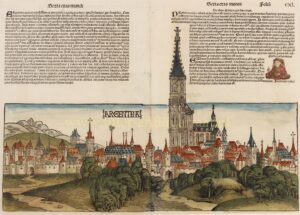BUDAPEST AT ITS HEYDAY
“Buda”, woodcut from a Latin edition of the famous “Liber chronicarum” by Hartmann Schedel, printed by Anton Koberger in 1493. With beautiful original 15th-century hand colouring. Size (printed area): 37 x 52,5 cm.
Buda had been the capital of the Kingdom of Hungary since 1361. It had a particularly significant cultural role during the reign of King Matthias Corvinus (1464-1490). The Italian Renaissance had a great influence on the city. The Bibliotheca Corviniana was Europe’s greatest collection of historical chronicles and philosophic and scientific works in the 15th century, and second in size only to the Vatican Library. After the foundation of the first Hungarian university in Pécs in 1367, the second one was established in Óbuda in 1395. The first Hungarian book was printed in Buda in 1473.
While Pest was mostly Hungarian in the 15th century, Buda had a German majority. Around 1500 it had about 5,000 inhabitants. (Buda merged with Obuda and Pest only in 1873.)
At the publication of this view of Buda, shortly after the death of king Matthias I, prospertity was beginning to decline. The Ottomans conquered Buda in 1526, as well in 1529, and finally occupied it in 1541. The Turkish Rule lasted for more than 150 years.
Hartmann Schedel’s Liber Chronicarum: Das Buch der Croniken und Geschichten [book of chronicles and stories], popularly referred to as the Nuremberg Chronicle (from the city of its publication), was the first secular book to include the style of lavish illustrations previously reserved for Bibles and other liturgical works.
The project to produce the Nuremberg Chronicle was instigated by the artist Michael Wolgemut (1434/37–1519), who with Wilhelm Pleydenwurff (c. 1450-94), conceived and executed its illustrations and engravings (one of Wolgemut’s apprentices included the young Albrecht Dürer but it is no longer thought that he worked on the Chronicle). To finance this expensive and hugely risky undertaking Wolgemut obtained the support of two wealthy patrons, Sebald Schreyer (1446-1520) and his brother-in-law Sebastian Kammermaister (1446-1520), after which the famous Nuremberg printer Anton Koberger (ca.1440-1513), agreed to do the printing.
The task of actually writing the work was assigned to the Nuremberg physician and humanist Hartmann Schedel (1440-1514). The diverse range of medieval and Renaissance sources used were drawn from authors Schedel studied as a student (at Leipzig and Padua), including Bede, Vincent of Beauvais, Martin of Tropau, Flavius Blondus, Bartolomeo Platina and Philippus de Bergamo. Like most incunabula (i.e. books printed before 1501), the work was published in Latin, although a German version was also produced a few months later.
The work was intended as a history of the world, from beginning of time to the 1490s, with a final section devoted to the anticipated Last Days of the World. It is without question the most important illustrated secular work of the 15th Century and its importance rivals the early printed editions of Claudius Ptolemy’s Geographia and Bernard von Breydenbach’s Peregrinatio in Terram Sanctam in terms of its importance in the development and dissemination of illustrated books in the 15th Century.
On the reverse side of the view of Buda there is a second woodcut of the city of “Argentina” (Strasbourg), also with beautiful 15th century hand colouring.
In the center of the view there is the Strasbourg Cathedral which was completed (with only one tower) in 1439, becoming one of the world’s tallest buildings (the tallest from 1647-1874). A few years later, Johannes Gutenberg created the first European printing press in Strasbourg and printed his Gutenberg Bible in 1455.
Price: SOLD


